Romance, adventure, nature, sports, weddings… No matter the reason, the Veneto region promises an unforgettable experience
Veneto, in northeast Italy, is a spectacular destination with a host of attractions from the Dolomites to the Adriatic Sea and is famous for its canals, Gothic architecture, and the Venice Carnival. The region’s provinces are home to boundless natural beauty and historic cities, like Venice, Verona, Vicenza, Padua and Treviso. Let’s take a closer look at what’s on offer.
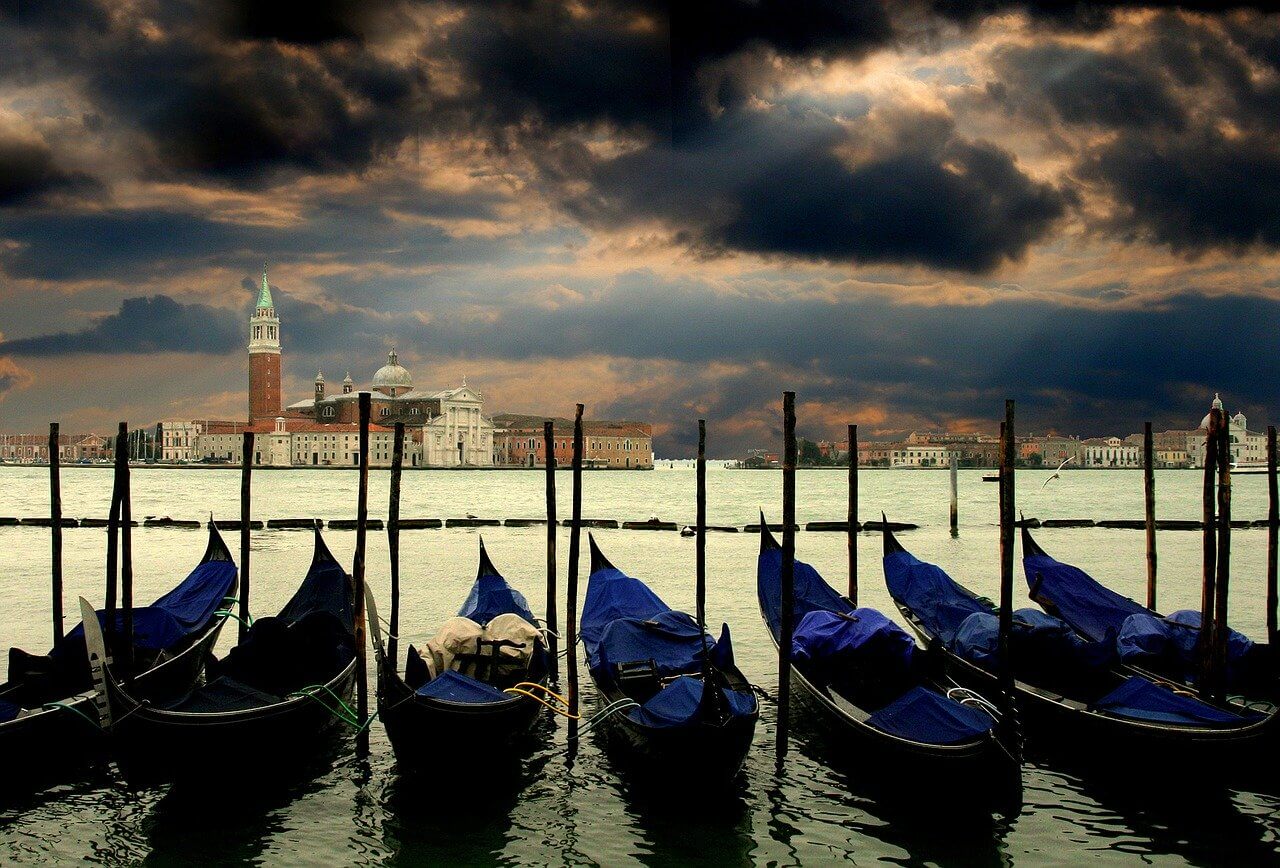
History
The Veneto region is made up of seven provinces and more than 580 municipalities. Some of its historic cities were once home to the Romans, who built border controls at strategic points to help control the empire’s network of roads. The region prospered until later German invasion when it lost much of its importance and prestige.
Glory returned under Venetian rule and the important commercial operations established between Venice and the Far East. Even today, you can still find the hallmarks of this period of prosperity in the lavish decoration of palaces, churches and monuments.
The Tourist Path
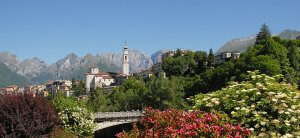
Veneto caters for all tastes but is the perfect destination for those that love romantic getaways, adventure and history. And that’s not to mention the irresistible enogastronomy tours on offer, which allow visitors to sample and experience the region’s culinary traditions and culture.
As you compile your “things to do” list, be sure to start your journey in Venice. The city’s lagoon, islands, Grand Canal, and enchanting architecture transport you to a truly magical world. Essentially a floating city, it is wildly romantic, evocative, sophisticated, and exuberant.
Monuments and art are high on the agenda, such as the incredible Piazza San Marco, the Bridge of Sighs, the Ducal Palace, the Basilica of San Marco, the innumerable little streets full of boutiques and artisan workshops, ornate churches, sculptures and frescoes from different periods, museums and hidden squares. Each place holds its unique stories and charm.
From Venice you can stop by Verona, another beautiful and romantic city, where you’ll find quaint churches, bridges, a Roman amphitheatre, and the home of one of Italy’s most famous lovers: Juliet. All this in one city, allowing you to fill your suitcase with emotions and memories to cherish forever.
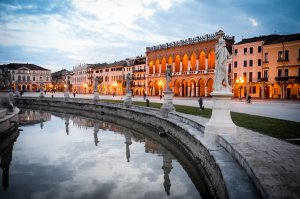 As both a centre of the arts and an important university city, Padua is also a must-visit destination on your trip to Veneto. Here you’ll find the Basilica of Santo Antônio, which is a big draw for those interested in religion, the magnificent Cappella degli Scrovegni, entirely frescoed by Giotto, and the Botanical Gardens of 1545, a World Heritage Site bursting with medicinal plants.
As both a centre of the arts and an important university city, Padua is also a must-visit destination on your trip to Veneto. Here you’ll find the Basilica of Santo Antônio, which is a big draw for those interested in religion, the magnificent Cappella degli Scrovegni, entirely frescoed by Giotto, and the Botanical Gardens of 1545, a World Heritage Site bursting with medicinal plants.
Vincenza, Italy’s capital of gold, is also not to be missed. The small historic centre, characterised by splendorous architecture, is made up of grand mansions—ville—built in the 16th century by the architect Andrea Palladio under the orders of the aristocratic families of the time, better known as “ville palladiane”. The buildings that surround the Palladina Basilica and the Olympic Theatre are real showstoppers.
Away from the city attractions, the Dolomites are the “high point” of any tour of Veneto. This spectacular mountain range offers breath-taking scenery all year round, as well as the opportunity to explore a range of different outdoor sports activities. The area’s small villages look like postcards from a distant past and its magnificent lakes are signatures of the range’s natural beauty.
Cortina d’Ampezzo is perhaps the best-known location in the Dolomites, due to its mesmerising snow-capped mountains and exclusive ski slopes. This is an imperative pitstop for those looking to take in some stunning scenery.
Treviso is a city of elegance, with boutique stores and local specialities. Its historic buildings are wonderfully detailed and still boast remnants from Gothic paintings and frescoes. The impressive canals that cross the city transform it into the “city of waters”. It is also worth visiting the Piazza dei Sig Pro, in the heart of the historic centre, which is a popular spot for those that enjoy a coffee.
If peace and quiet is more your travel preference, Belluno is the perfect place. Tranquillity and silence are all but guaranteed in a city that has managed to resist the hectic pace of modern life. Belluno offers everything you could want from a genuine alpine city: a historical centre; panoramic views; an amphitheatre with a mountain backdrop. It is also the only city that is located entirely within a natural park.
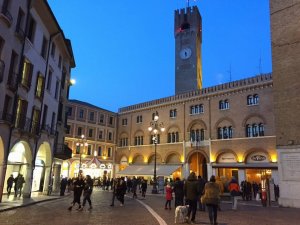 There are beautiful places and medieval towns to visit throughout Veneto. In the province of Padua, there’s the village of Montagnana, with its fortified walls that remain in excellent condition to this day. This small town is on the list of “Borghi più belli d’Italia” (Italy’s most beautiful villages), and the Castle of San Zeno is one of its main attractions. In addition to the extraordinary fortified complex, the city is also lined with streets and buildings from the Renaissance period.
There are beautiful places and medieval towns to visit throughout Veneto. In the province of Padua, there’s the village of Montagnana, with its fortified walls that remain in excellent condition to this day. This small town is on the list of “Borghi più belli d’Italia” (Italy’s most beautiful villages), and the Castle of San Zeno is one of its main attractions. In addition to the extraordinary fortified complex, the city is also lined with streets and buildings from the Renaissance period.
And those who think that only large cities are home to history and culture are mistaken. Small ones have plenty on offer, too. Asolo is a medieval village set in the foothills of the Treviso region, and home to quaint squares, winding roads, and incredible panoramic views of the surrounding countryside. Also close by is Villa Barbaro, one of Andrea Palladio’s masterpieces, and the Museu delle Carrozze.
Rovigo, a city full of public monuments and history, is another highly recommended stop on any tour of the region.
Curiosidades

There are also some intriguing facts about Veneto to make your travels that much more memorable. For example, Veneto is the guardian to the oldest algebra text in the world, discovered in 1478. It is considered “the first mathematics book in the world”: The Art of Abacus.
Other curiosities relate to a football championship played exclusively by royalty since the 15th century and the well-held belief that Venetian laws inspired Benjamin Franklin to help draft the U.S. Constitution.
Glass factories
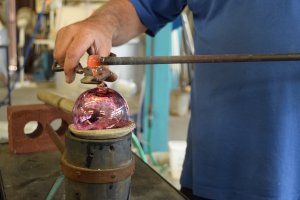 One of the most fascinating and recognised objects of Italian craftsmanship is without a doubt Murano glass. Venice has a number of prised factories that produce colourful jars, glasses, bowls and bespoke lamps.
One of the most fascinating and recognised objects of Italian craftsmanship is without a doubt Murano glass. Venice has a number of prised factories that produce colourful jars, glasses, bowls and bespoke lamps.
The manufacturing process today is exactly as it was in the past, and teamwork is essential. There are several stages of production and the team has to be well-coordinated to avoid mistakes. While one blows the glass, another team member is on hand to place it in the kiln, before shaping it using wooden tools and cooling it off in the water. The complexity of the work involved gives each piece its unique characteristics, since it’s almost impossible for one handmade piece to be identical to the next.
One of the most famous factories is Carlo Moretti, which produces bespoke pieces, some of which are now part of collections in prominent museums and galleries in New York, Paris, and London. The pieces are made by local artisans and undergo a strict process of quality control and finishing, and are signed and dated, like genuine objects of art. It is little surprise that the factory is a favourite among architects, designers and art lovers.
The mastery and pride with which Italians pass on glass blowing techniques from one generation to the next are inspiring and something to truly celebrate.
Festivals
 Spring is a long-awaited season in European. Once the colder months pass, people are generally eager to break out the summer wardrobe and go for long walks outdoors. In the Veneto region, the new season is celebrated with the Spring of Prosecco, an event that has been going on for years and unites several small towns near Treviso.
Spring is a long-awaited season in European. Once the colder months pass, people are generally eager to break out the summer wardrobe and go for long walks outdoors. In the Veneto region, the new season is celebrated with the Spring of Prosecco, an event that has been going on for years and unites several small towns near Treviso.
The objective of the festival is to showcase local food, wine, and crafts as a way of promoting wine tourism and the cultural appeal of the region. The festival’s programme runs for four months and features 15 exhibitions, the most famous of which takes place in a village called Col San Martino.
One of the most famous Carnivals in the world takes place in Venice, where the magic and tradition of long-standing celebrations are maintained to this day. Gala balls, masks and costumes enchant generations.
Taking part in the Venice Carnival is a truly unique and emotional experience. It is worth braving the winter cold to see this cultural tradition up close and personal. It is an event that continues to fascinate people from all over the globe.
Venice Biennale
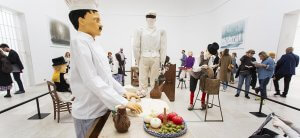
The Venice Biennale is a festival full of cultural significance, and the oldest of its kind, dating back to 1895 which united 224,000 visitors, including Kings Umberto I and Margherita di Savoia.
The creative director of each Biennale is responsible for defining the overall theme and selecting the artists for the main exhibition. Works are exhibited in the two main buildings of Giardini and Arsenale, which is where the operational headquarters of the Biennale is based. Each exhibit is accompanied by information relating to the artist and their influences. The chance to see all these different artists united around their objects of creative expression is something quite extraordinary.
World Heritage Sites

To be a UNESCO World Heritage Site means being listed among some of the greatest natural, cultural and artistic wonders on the planet. Italy, with all its national treasures, has more than any other country: 55 in total. Veneto is home to six of them. Between Venice, Padova, Verona, Vicenza and the Dolomites, UNESCO has recognised some of the most beautiful places on Italian soil as a World Heritage Sites.
The first place chosen was Venice itself. As a city built upon a series of islands connected by waterways, there are some obviously unique characteristics. But the city’s initial importance in establishing early trade with the Far East accelerated the development of its one-of-a-kind architecture and development, resulting in rare beauty forged by man and nature.
The villages built by Andrea Palladino, found throughout Veneto, are also on UNESCO’s list. These include monuments such as the Olympic Theatre and grandiose palaces found in Vicenza, among others. The city of Verona, bathed in architectural splendour, is also a World Heritage Site.
UNESCO also includes the oldest university botanical garden in the world, in Padova. The site has been instrumental to the scientific advances of botany, medicine, ecology, and pharmacy, as well as promoting environmental sustainability and biodiversity.
The Dolomites were added to the UNESCO World Heritage List in 2009 as a natural phenomenon of geological significance. This mountain range, which stretches across northern Italy—mainly in the province of Belluno—is considered one of the most picturesque in the world.
The list ends with the 111 pile-dwelling sites of the Alpine Arc, which include settlements such as Peschiera del Garda, Tombola di Cerea and Arquà Petrarca. The natural materials discovered at these sites contributed in an extraordinary way to our understanding of the changes and relationships between populations during the Neolithic period and the Bronze Age.
Villa Emo
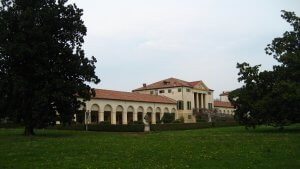
One of Andrea Palladio’s Venetian masterpieces is Villa Emo, the third estate built in the province of Treviso. The work was likely carried out between 1557 and 1560, commissioned by the Emo family, and was designed to be a farm of sorts (agricultural production was a safe investment at the time given the explosion in mercantile commerce). It was also a place of rest and relaxation for noble folk and their families.
Like almost every Venetian villa, Villa Emo has a huge garden set in acres of fertile agricultural land. The backdrop is entirely rural, with roads flanked by fields of corn, wheat, and some vineyards.
The layout is designed around a central family house, with outbuildings designed to store and protect agricultural produce. There are stables, a space for winemaking, and storage for farming apparatus and machinery.
Inside the main house, the rooms are decorated with episodes from Roman mythology and ancient history, as well as scenes portraying gods and goddesses. Clearly, giving thanks for the rural life and the bounty it holds was important. What is most striking, though, as is often a feature of Palladio design, is the symmetry of the architecture—the two symmetrical long, lower colonnaded wings, create incredible balance and a sense of harmony between man and nature.
Dolomitas
The mountain range, which dominates the eastern Alps of northern Italy, officially crosses three separate regions of the country, but Veneto generally offers the best access and options for tourism.
For those that love nature, especially from up high, the mountains are irresistible. And there are plenty of activities available, from adventure sports to hiking in the summer and, of course, skiing in the winter. Furthermore, the sprinkling of churches, museums, and monuments will impress cultural vultures.
There’s no shortage of jaw-dropping beauty in the Dolomites, whether it be in the natural settings of the mountains, lakes, and valleys, or the local cities like Moena, San Martino di Castrozza, Cortina d’Ampezzo, Madonna di Campiglio, Val di Non and Ladin.
The Dolomites are the crowning glory of a truly magical region, a destination that simply has to be explored and experienced first-hand.
What other reason could you need for getting to know such a uniquely memorable region like Veneto!


















